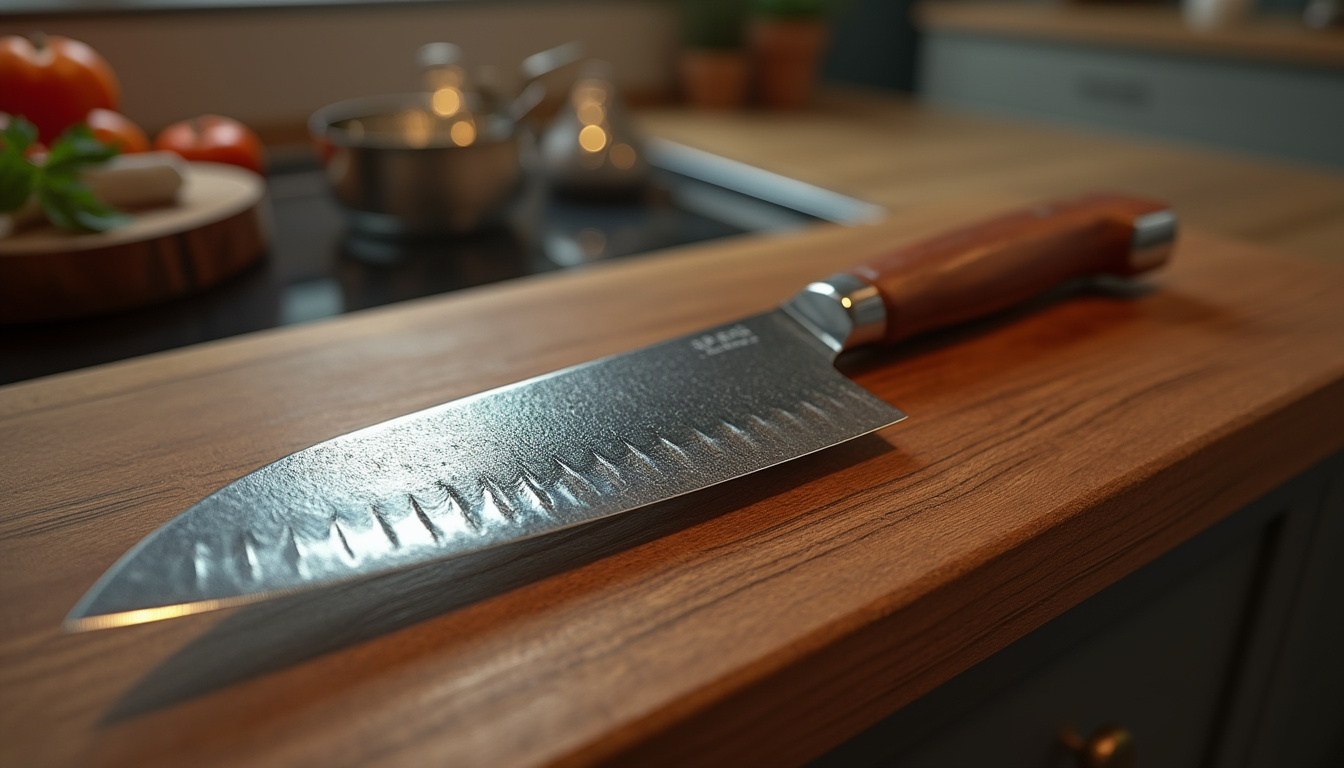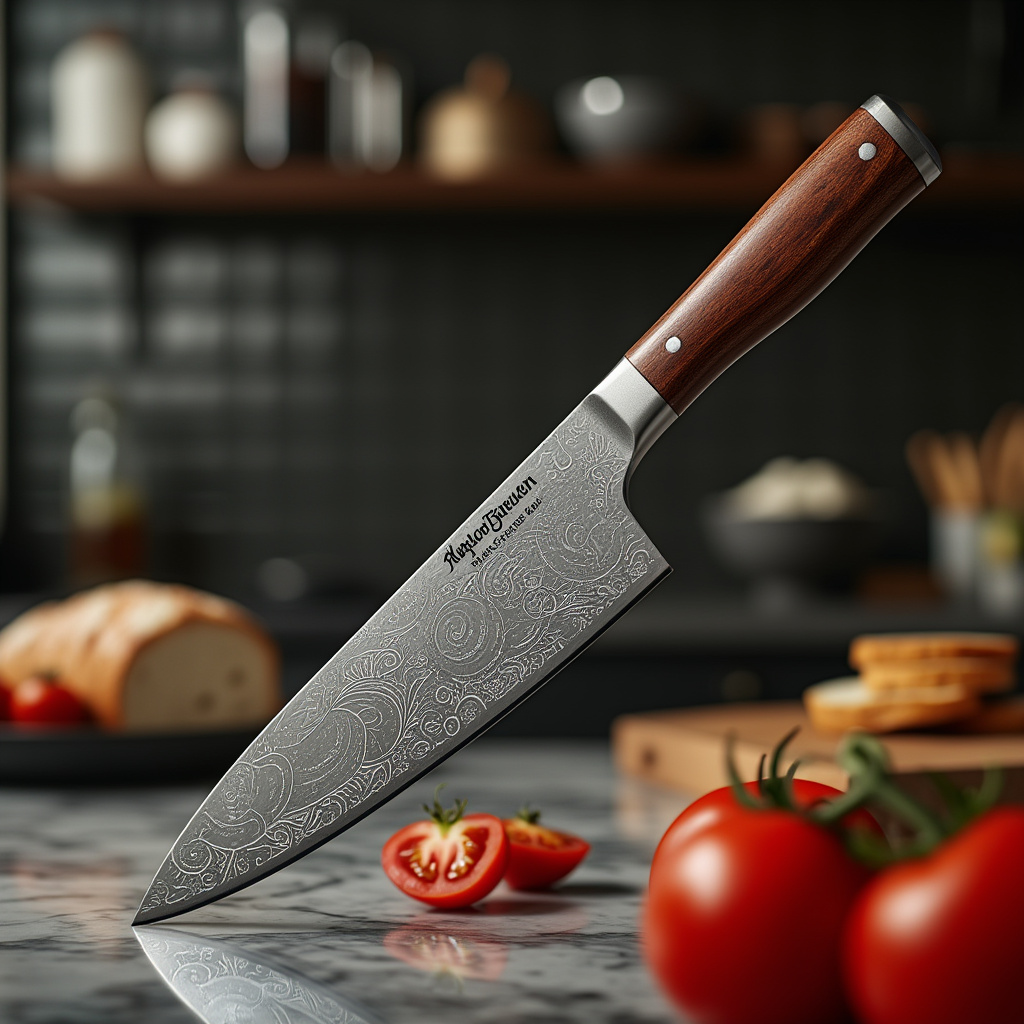Types of Chef’s Knives
There are two primary styles of chef’s knives, each with its own unique characteristics and benefits:
1. Western-style Chef’s Knives
Western-style knives, also known as German-style knives, feature a curved blade that is heavier and thicker. This design makes them ideal for rocking motions, allowing for efficient chopping, mincing, and slicing. The weight of the blade helps in applying the necessary force for tougher ingredients, making them a favorite among professional chefs.
2. Japanese-style Chef’s Knives
Japanese-style knives, often referred to as Gyuto knives, have a straighter edge and a lighter construction. These knives are perfect for precise slicing and chopping, offering superior control and accuracy. They are a popular choice for chefs who value precision and are commonly used in sushi and fine dining kitchens.
Blade Material
The material of the blade is a critical factor in determining the knife’s performance and maintenance requirements. Here are the most common materials used in chef’s knives:
High-carbon stainless steel
This material offers an excellent balance between edge retention and ease of sharpening. High-carbon stainless steel blades are durable, resistant to corrosion, and maintain their sharpness well, making them a versatile choice for both professionals and home cooks.
Stainless steel
Stainless steel blades are highly resistant to rust and corrosion, making them low maintenance. However, they may not hold their edge as well as high-carbon stainless steel blades, requiring more frequent sharpening.
Carbon steel
Carbon steel blades are known for their ability to hold a sharp edge. However, they require more maintenance as they are prone to rusting if not properly cared for. Despite this, many chefs swear by carbon steel for its exceptional cutting performance.
Blade Length
Chef’s knives are available in a variety of blade lengths, ranging from 6 to 14 inches. The most common and versatile length is 8 inches, as it provides the perfect balance between maneuverability and cutting power. When choosing a blade length, consider your personal comfort and the types of tasks you will be performing most frequently.
Handle Material and Design
The handle of a chef’s knife plays a crucial role in comfort and control. Different materials offer distinct advantages:
Wood
Wooden handles are traditional and aesthetically pleasing. They provide a comfortable grip and are often preferred by professional chefs. However, they require more maintenance to prevent cracking and drying out.
Plastic
Plastic handles are durable, easy to clean, and resistant to bacteria. They are a practical choice for busy kitchens where sanitation is a priority. However, they may lack the aesthetic appeal of wood or metal handles.
Metal
Metal handles are long-lasting and can be molded to fit the contour of the blade for added strength. However, they can become slippery when wet, which may pose a safety risk if not handled carefully.
Ultimately, the handle material should be chosen based on your specific needs, whether it’s durability, aesthetics, or ease of maintenance.
Blade Construction
The construction of the blade is another important factor to consider when choosing a chef’s knife. A well-constructed blade ensures durability and performance.
Forged vs. Stamped
Forged blades are made by heating and shaping metal, resulting in a stronger and more durable knife. Stamped blades, on the other hand, are cut from a sheet of metal and are generally more affordable but less durable.
Full Tang
A full tang knife extends the entire length of the handle, providing better balance and stability. This construction is preferred for its strength and durability.
Bolster
The bolster is the thick part where the blade meets the handle. It adds weight and improves balance, making the knife easier to control during use.
Edge Type
The edge type of your chef’s knife can greatly affect its performance depending on the tasks you perform most often.
Straight Edge
A straight edge is the most common type and is versatile for various cutting tasks. It is also the easiest type of edge to sharpen.
Serrated Edge
A serrated edge is ideal for cutting through tough or fibrous materials like bread and tomatoes. However, it can be more challenging to sharpen.
Granton Edge
A Granton edge features hollowed-out sections along the blade, which help prevent food from sticking to the knife. This edge is particularly useful for slicing and filleting.
Weight and Balance
The weight and balance of a chef’s knife are crucial for comfort and control during use. A well-balanced knife should feel natural in your hand and not cause fatigue.
Brand and Price
While high-end brands often offer superior quality, there are excellent chef’s knives available at various price points. Consider your budget and how you plan to use the knife when making your decision.
Maintenance
Proper maintenance is essential to extend the life of your chef’s knife and maintain its performance.
Cleaning and Drying
Always hand wash your knife with mild soap and dry it immediately after use to prevent rust or corrosion.
Honing
Use a honing steel regularly to maintain the edge of your knife. Honing aligns the blade’s edge and keeps it sharp between sharpenings.
Sharpening
Sharpen your knife as needed using appropriate sharpening tools. The frequency of sharpening depends on how often you use the knife.
Storage
Store your knife in a dry place, such as a knife block or magnetic strip, to protect the edge and prevent accidents.

Conclusion
Selecting the right chef’s knife is a personal decision that depends on your cooking style, budget, and preferences. Whether you opt for a Western-style or Japanese-style knife, the key factors to consider are blade material, length, handle comfort, and maintenance requirements. A high-quality chef’s knife is an investment that will elevate your cooking experience and last for years with proper care. By understanding the differences in construction, edge types, and materials, you can make an informed decision and find the perfect tool to enhance your culinary creations.
FAQ
What is the best type of chef’s knife for a home cook?
A Western-style chef’s knife is often recommended for home cooks due to its versatility and ease of use. It excels at chopping, mincing, and slicing, making it a great all-purpose tool for everyday cooking.
What is the difference between a Western-style and Japanese-style chef’s knife?
Western-style knives are heavier with a curved blade, ideal for rocking motions, while Japanese-style knives are lighter with a straighter edge, designed for precise slicing and chopping.
What blade length is best for most tasks?
An 8-inch blade is the most versatile length, offering a balance between maneuverability and cutting power for a wide range of tasks.
How often should I sharpen my chef’s knife?
Sharpen your knife as needed, typically every 1-3 months depending on usage. Regular honing with a steel can maintain the edge between sharpenings.
How do I prevent rust on a carbon steel knife?
Hand wash and dry immediately after use, and apply a thin layer of food-safe oil to the blade during storage to prevent rust.

Leave a Reply